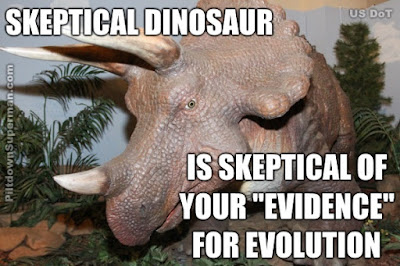Things Refusing to Evolve

Advocates of microbes-to-microscopist evolution have a great deal to say about the hows and whys of the appearances of things living today, and of those that went before. However, it is difficult to examine their evidence, because it's mighty scarce. Sure, we get a passel of authoritative assertions of "it evolved that way", but assertions and tall tales are not scientific evidence. What follows are several links illustrating false claims of evolution happening. This will be good for students to examine and see how science and evolution can often be mutually exclusive. Original image credit: US Dept of Transportation / aschweigert (Usage does not imply endorsement of site contents) Non-Evolving Dinosaurs Assertions of "being covered with feathers" without any sign of the things; why some dinosaurs moved fast, but details are expected in the future; a crocodile fossil that dates 170 million Darwin Years old is essentially identical to modern crocodiles...





